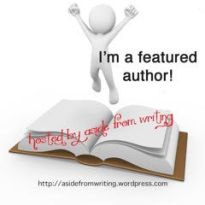
This coming week, I’m going to make three posts about Carl Jung’s Archetypes. I will be taking the 12 and discussing them under the 3 categories of Ego, Soul, and Self. Now . . . I think I missed something. Oh yeah! People might not have any idea what this is, especially since I can’t call myself even close to an expert. I really stumbled onto this and remembered hearing a little during my psychology classes in college. That’s why I’m doing this post to help people get an idea of what I’m going to discuss on Monday, Wednesday, and Friday.
First, this site has a great amount of information and I will be using it to help me formulate my posts.
I’m going to talk about how these archetypes help with writing characters, which brings up the idea that understanding psychology can aid fiction authors. This sounds like a no-brainer, but not everyone thinks this. The more you understand the human mind, the more varied and deep your characters will be. It doesn’t have to be a thorough understanding, but learn enough to prevent yourself from birthing only two-dimensional beings. Carl Jung’s archetypes alone can be very helpful, which is why I’m going to do my best to introduce them throughout the week.
Archetypes are originals, typical examples, or recurrent themes that can be identified, but we’re going to look at the second one more. Jung found 12 archetypes that cover the full range of human motivations and everyone has a dominant. He believed that the psyche can be defined by these and the 12 have been analyzed to great extent. Each one has a weakness, strength, something they seek, fears, and talents much like how we look at zodiac signs. There are various divisions for the archetypes as well, but I’ve seen two very common ones:
- Ego, Self, and Soul is one of them, which I will touch on throughout the week. The 4 in each category share the same focus in what to fuel. It’s very similar on the surface to Id, Ego, and Super Ego, which shows the connection between Jung and Freud as you see in the picture above.
- The other is 4 orientations that focus on what the archetypes desire. They either seek to leave a mark on the world, provide structure, connect to others, or seek utter freedom. You can already tell how this can be used to forge characters both good and evil.
Going back to the point about each person having a dominant archetype, this doesn’t mean that you only use one for a character. They can have multiple ones with a single being at the core. This gives them multiple facets and the person may even change as they progress through the story. It is for this reason that an author using Jung’s work to help in their writing needs to understand and look into all of the categories. Cherry-picking here will prevent you from getting the full picture and leave out some very valuable pieces of the human psyche. We might not like all 12 archetypes, but that might be because there are those that are opposite of our own personality. This is when we have to step out of our heads and be neutral.
What are the 12 Archetypes? (Ego 1-4, Soul 5-8, Self 9-12)
- The Innocent
- The Everyman
- The Hero
- The Caregiver
- The Explorer
- The Rebel
- The Lover
- The Creator/Artist (All of us probably know this one to some extent.)
- The Jester
- The Sage
- The Magician
- The Ruler
As I look over these, I can see that they are fairly basic and straightforward at times. Each one has a motto that I’m going to share since they’re very clear. The bluntness of some of these makes it clear why you need to mix them up. If someone was solely a Ruler who believes in power then that’s a bland villain. Combine a Ruler with a Caregiver to get a benevolent leader. There does seem to be polar opposites here at times and they show how the human psyche is designed to be balanced. You need one archetype to temper another even if it’s not as pronounced.
Well, this is only an overview to get people ready. I don’t want to go into too many details and leave myself nothing for the week. Hope people check out that site, which I’m going to mention again HERE.





This promises to be an interesting week. Hope I can retain a bit of this for my own projects.
LikeLike
You’d be surprised how much of it you may already use. I caught onto a few things in my books that fall into this. Then again, they’re kind of umbrella categories.
LikeLiked by 1 person
I’ve paid fleeting attention to Joseph Campbell and his archetypes, and I imagine there is similarity. We can always glean a few nuggets of information from such studies.
LikeLike
I have to look into him. Honestly, I never heard of his archetypes.
LikeLiked by 1 person
This is a terrific subject matter, Charles. Looking forward to your discussion.
LikeLike
Thanks. Hope everyone enjoys it.
LikeLiked by 1 person
I’m sure they will.
LikeLike
Carl Jung was a brilliant psychologist. The 12 archetypes like gave birth to the personality traits genre in psychology. Most of those tests break people into a relatively small subset.
I look forward to the series and learning more about Carl Jung’s 12 archetypes.
LikeLike
Thanks. I don’t go into a lot of detail since I put 4 to a post. It’s directed more at character building in fiction.
LikeLike
Very interesting! I have studied Jung extensively and it’s fascinating to see this new take on his archetypes. I’m more used to seeing these discussed in the context of rather rdy psychological analyses, so the ones I’m more familiar with are the Shadow, the Wise Man, Animus/Anima etc. I’m looking forward to this!
LikeLike
I hope I live up to your expectations. Didn’t run into those things. I think.
LikeLiked by 1 person
Reblogged this on Author Don Massenzio and commented:
Check out this post on the topic of Jung’s Archetypes: Brief Overview from Charles Yallowitz’s Legends of Windemere blog.
LikeLike
Thanks for sharing.
LikeLiked by 1 person
My pleasure.
LikeLike
Sounrs like it will be interesting.
LikeLike
I hope so.
LikeLiked by 1 person